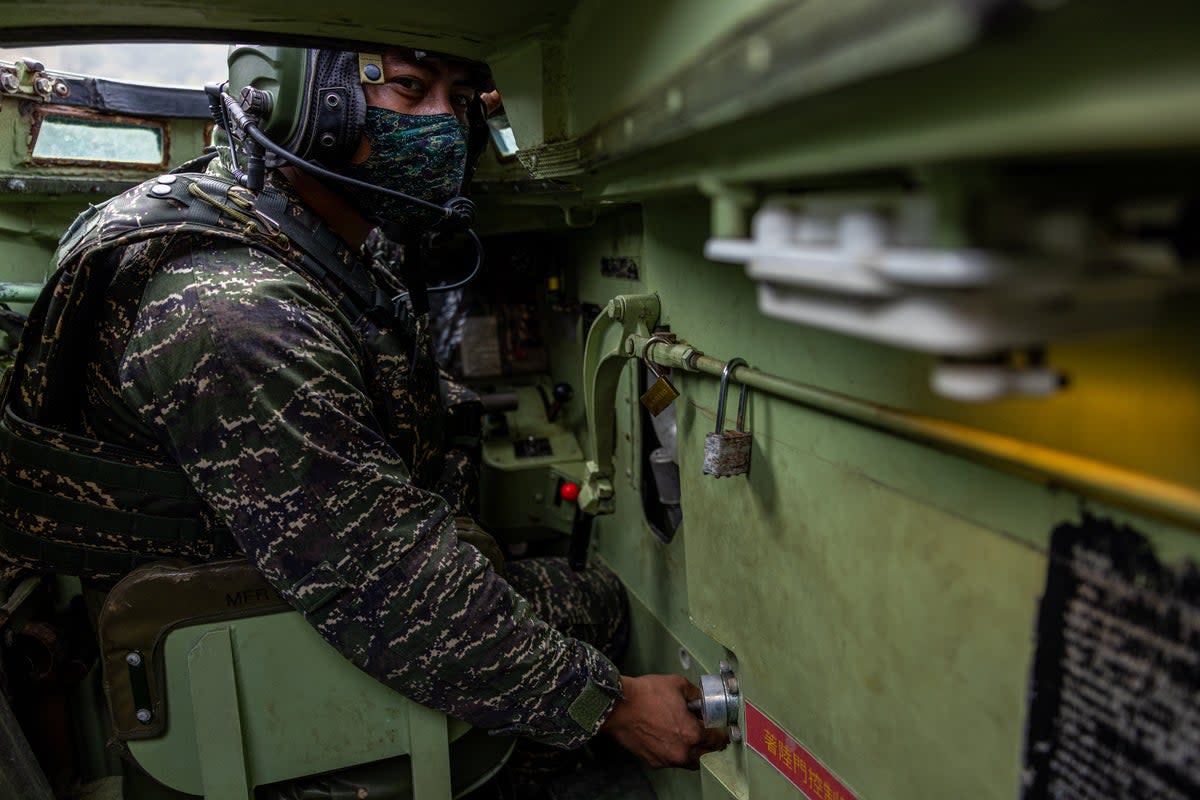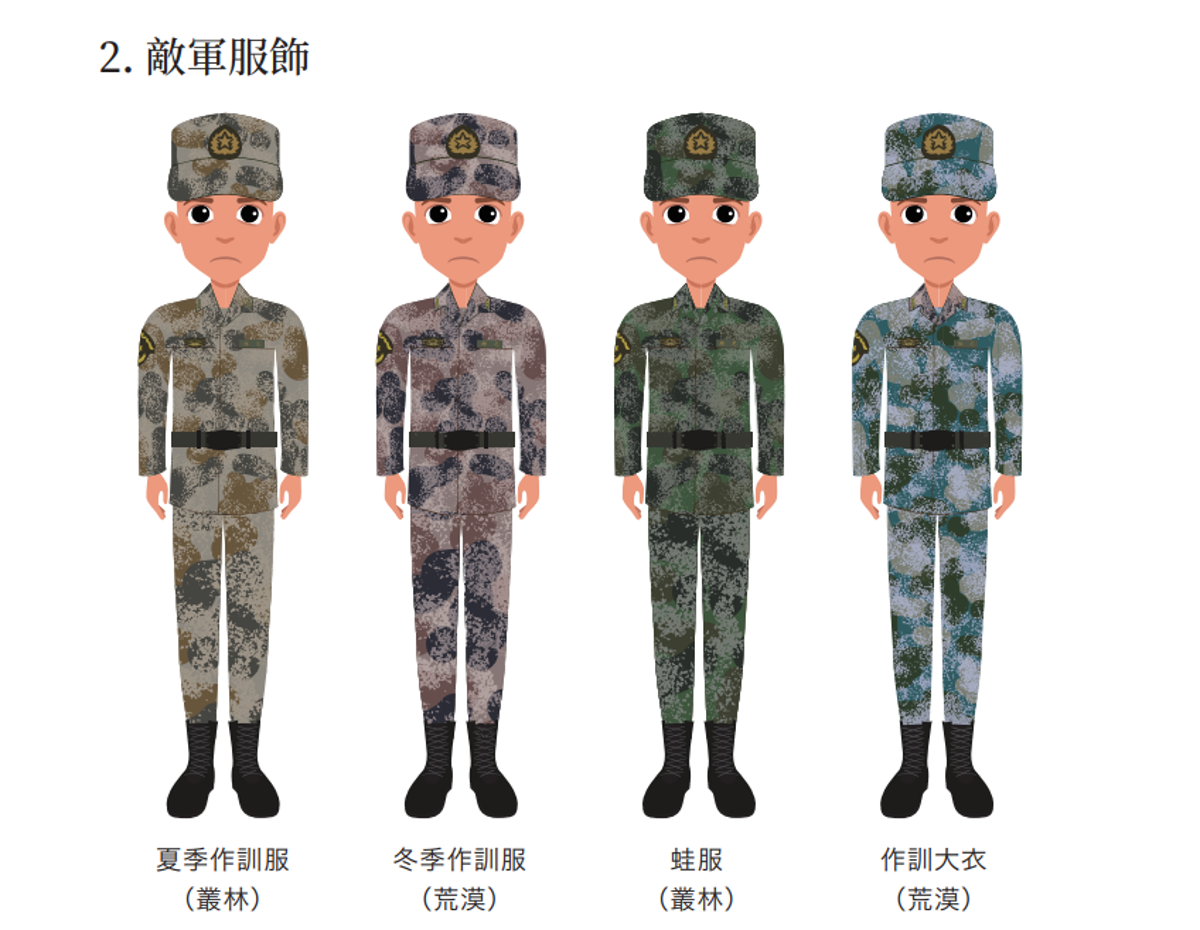Taiwan handbook teaches civilians how to spot ‘enemy’ Chinese soldiers

A defence handbook was released by Taiwan’s military to distinguish between Chinese and Taiwanese soldiers based on their uniforms, camouflage, and insignia through colourful cartoons.
The updated defence handbook released on Tuesday with the latest changes detailed how civilians can find bomb shelters, water and food supplies using apps on their mobile phone.
A colourful graphic with a 14-point guide was added for civilians on how to prepare for war scenarios after Taiwan’s defence ministry received feedback that the book needed to reflect the conflict situation better in the wake of Russia’s full-scale invasion of Ukraine, the ministry said.
A key change in the handbook included illustrations of Taiwanese and Chinese personnel standing against each other with the latter wearing lighter olive fatigues and termed as “enemy soldiers”.
It further detailed four different uniforms of the Chinese People’s Liberation Army (PLA) such as the ones worn in summer, winter, jungles and in the desert.

The handbook graphic also categorically identified the right chest military badge, armband on the right arm, identification tag on the left side of their chest and the two-dimensional barcode used on the PLA’s uniform for military identification.
For Taiwanese soldiers, the graphic contained details about the military-rank patches worn by the army from the colonel level, to captain, lieutenant among a total of dozen ranks.

Under “my country’s national army clothing”, the handbook had three soldiers in their respective uniforms of army, marines and air forces.
While the Taiwanese soldiers are shown smiling, the Chinese troops have downturned frowns and a serious expression.
“It’s actually quite hard to distinguish them," All-Out Defence Mobilisation Agency director Shen Wei-chih told reporters at the defence ministry.
The handbook was unveiled last year when the tensions between the self-governed island nation and Beijing spiked, followed by Russia’s invasion of Ukraine.
Taiwan’s military has released its New Edition of a Civil Defense Handbook. Inside are tips and guidelines to prepare for an “emergency”.
A good way to educate the public on what to do in a variety of situations.
Attached is the link to the booklet pic.twitter.com/fB57rK9AHz— Jaime Ocon 歐海美 (@JaimeOcon1) June 13, 2023
In its earlier version, the handbook’s colourful graphics detailed how civilians can find bomb shelters, water and food along with tips for preparing emergency first aid kits.
Under the usual circumstances seeking preparedness from civilians, the handbook listed four points on looking out for air defence sirens, nearby locations of safety and trusting the correct information.
The other 10 points listed what civilians needed to do in war-time situations in the booklet available for download online.
Experts warned that the booklet assumes that the invading Chinese soldiers will enter the nation wearing their PLA uniforms. Special forces troops may wear different gear as they will look to infiltrate Taiwan during an invasion.
The agency is working on an English translation, Mr Shen said.
China has said it can take the democratically governed Taiwan by force as it calls the sovereign island its own territory despite Taipei’s strong objections. In the last year, China ramped up military and political pressure over Taiwan to push its sovereignty claims.
Taiwan has also been inspecting bomb shelters – a takeaway from Ukraine which is increasingly relying on these bunkers to shield people from incoming Russian missiles. They have been making sure they were easier to find, with markers that might eventually include flashing lights, officials said at the same news conference.
The handbook comes amid discussions on implications of the example set by Russia by invading its neighbour. Officials in Taiwan were looking and working on ways to boost preparedness, such as reforms to the reservist training and extending military service.
